Learn with Us
Select a Subject
Giorgio Parisi: The 2021 Nobel Laureate addresses a variety of topics in theoretical physics
In his scientific career, Giorgio Parisi worked mainly in theoretical physics, addressing topics as diverse as particle physics, statistical mechanics, fluid dynamics, condensed matter, and the constructions of scientific computers. He also wrote some papers on neural networks, the immune system, and the movement of groups of animals.
Professor Giorgio Paris, Wolf Prize Laureate discusses his work
Nobel Prize Acceptance Lecture by Giorgio Parisi
At the International Center for Theoretical Physics, Giorgio Parisi gives a lecture on “The Value of Science”.
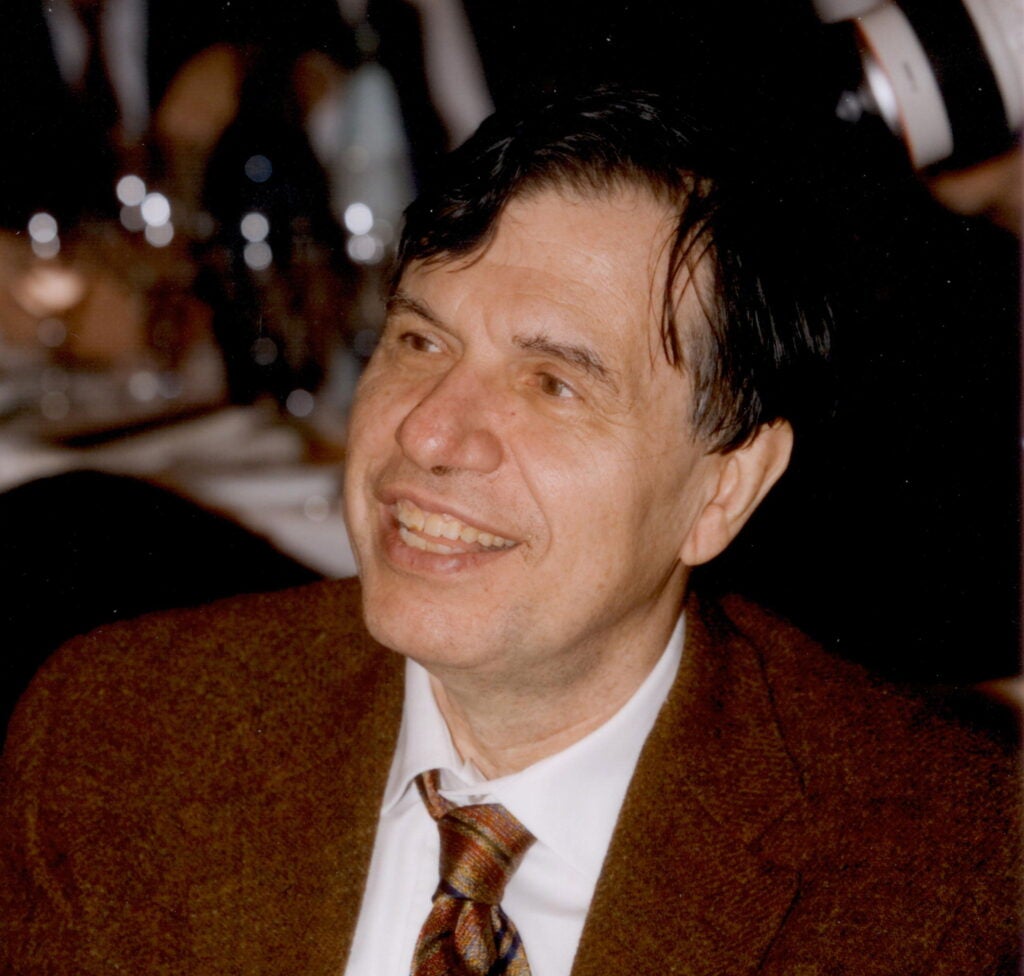
Giorgio Parisi
Physicist, 2021 Nobel Laureate
Giorgio Parisi was born in Rome on August 4, 1948, he completed his studies at the University of Rome and he graduated in physics in 1970 under the direction of Nicola Cabibbo.
He carried out his research at the National Laboratories of Frascati, first as a fellow of the CNR (1971-1973) and later as a researcher of the INFN (1973-1981). During this period he made long stays abroad: Columbia University, New York (1973-1974), Institut des Hautes Etudes Scientifiques, Bures-sur-Yvettes (1976-1977), Ecole Normale Superieure, Paris (1977-1978).
He was nominated full professor at the University of Rome in February 1981; from 1981 to 1992 he was a professor of Theoretical Physics at the University of Rome Tor Vergata. Since 1992 he was a Professor of Theoretical Physics at the University of Rome La Sapienza where he taught Statistical Mechanics & Critical Phenomena and Probability. Actually, he is an emeritus professor of La Sapienza.
He wrote more than six hundred articles and contributions to scientific conferences; he has also authored four books. In his scientific career, he worked mainly in theoretical physics, addressing topics as diverse as particle physics, statistical mechanics, fluid dynamics, condensed matter, the constructions of scientific computers, and optimization theory. He also wrote some papers on neural networks, the immune system, and the movement of groups of animals.
His works are extremely well-known. In the Google Scholar database (http://scholar.google.com/citations?hl=en&user=TeuEgRkAAAAJ&pagesize=100&view_op=list_works) we can count about 700 works with more than 84000 citations and a H-index 120. The text of the last 400 works can be found in the archives (http://arxiv.org/find/all/1/all:+parisi_g/0/1/0/all/0/1).
In 1992 he was awarded the Boltzmann Medal (awarded every three years by I.U.P.A.P. on Thermodynamics and Statistical Mechanics) for his contributions to the theory of disordered systems, the Max Planck Medal in 2011, from the German Physical Society, the Wolf Prize in 2021 and the Nobel Prize in 2021.
He also received the Feltrinelli Prize for Physics in 1987, the Italgas Prize in 1993, the Dirac Medal for theoretical physics in 1999, the Italian Prime Minister Prize in 2002, the Enrico Fermi Award in 2003, the Dannie Heineman Prize of the APS in 2005, the Nonino Prize in 2005, the Galileo Prize in 2006, the Microsoft Prize in 2007, the Lagrange Prize in 2009, the Vittorio De Sica Prize in 2011, the Prix des Trois Physiciens in 2012, the Nature Award for Mentoring in Science in 2013 and the 2015 High Energy and Particle Physics Prize by the EPS HEPP Board, the Lars Onsager Prize of the APS in 2016 and the Pomeranchuk Prize in 2018, the Wolf Prize and the Nobel Prize in 2021.
He received the 2010 first advanced ERC grant and in 2016 a second advanced ERC grant.
He is a member of the Accademia dei Lincei, the Accademia dei Quaranta, the Académie des Sciences, the U.S. National Academy of Sciences, the European Academy, the Academia Europea, the American Philosophical Society and of the Academia Pontaniana.
From 2018 to 2021 he has been president of the Accademia dei Lincei.
Riccardo Illy: The Art of Excellent Products, the Italian Model
In his book The Art of Excellent Products, Riccardo Illy discusses business principles and approaches that lead to excellence and a successful business. Based on his personal experience he shares with the reader the Italian approach to excellence. He explains that Italians have succeeded in creating superior products that have stood the test of time and competition by prioritizing quality over short-term profits. He outlines the principles of the success of small and medium-sized family businesses namely, authenticity, simplicity, and patience. Furthermore, he states that to grow and achieve augmented quality, family businesses need time. Based on the Italian model of superior quality Riccardo Illy underlines Italy’s success in exporting globally its production. He encourages the reader to look at ways one can learn from the Italian philosophy of Incanto.
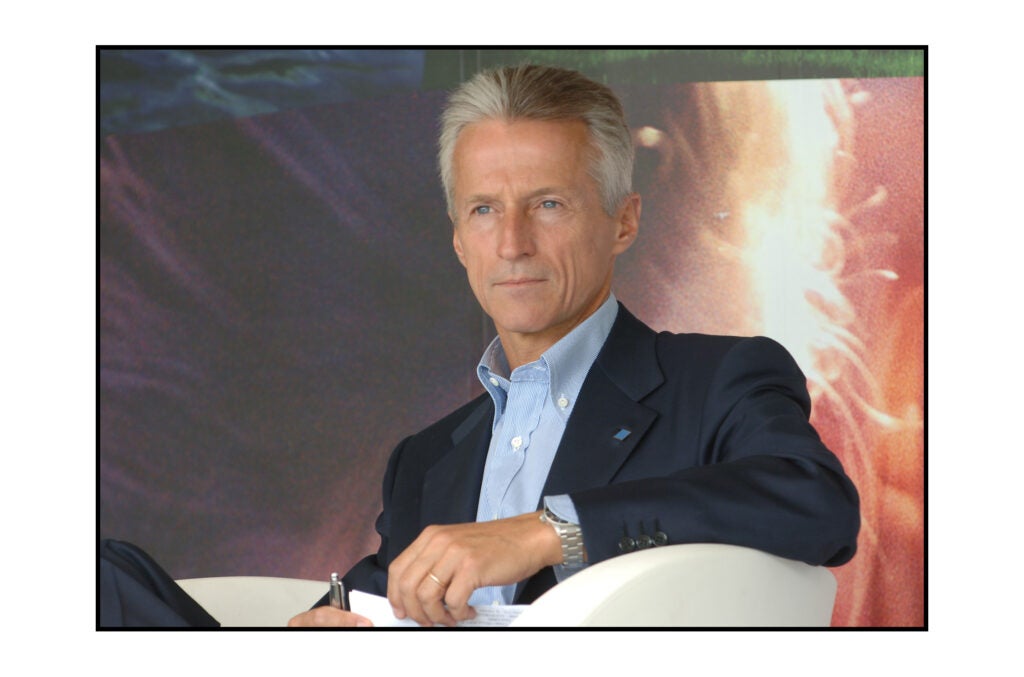
Riccardo Illy
Former Chairman of Gruppo Illy and Chairman of Polo del Gusto
Today, I am Chairman of Polo del Gusto, the Gruppo Illy holding company for our non-coffee businesses, with controlling interests in a number of world-class producers of chocolate, tea, wine, and confections. As a family, we have a passion for quality and for growth pursued the right way: this has led to rewarding investments in everything from Domori’s legendary chocolates to Mastrojanni’s magnificent wines.
I first joined Illycaffè in 1977 to help reorganize the company’s commercial structure. In the 1980s, as the rest of the coffee industry proliferated thoughtlessly into blend aQer blend, I focused illycaffè on producing its flagship blend alone. This emphasis on quality over quantity has more than stood the test of time. During my tenure at illycaffè, I enhanced its sales network both in Italy and abroad and brought Illy coffee into groceries as well as offices through single-serving coffee pods. I also headed Illycaffè’s marketing and communication efforts and redesigned the brand.
In 1992, I became Illycaffè’s CEO. The following year, I was elected mayor of Trieste, a position I held until 2001 when I was elected a member of Italy’s Parliament. In 2003, I was elected President of the Friuli Venezia Giulia region, a position I held until 2008. In 2004, I became President of the Assembly of European Regions, a forum of inter-regional cooperation. In addition to these roles, I have held several other prestigious positions with governmental and business organizations across Italy and the EU as a whole.
I lecture regularly at business schools around the world, from Stanford in the United States to HEC in Paris to MIB in Trieste. I am the Academic Director at Italia Innovation, an organization that fosters research, education, and new ventures in the manufacturing economy with a humanistic approach. Since 2018, I have taught a course there on disruptive quality with an acceptance rate under 12% populated by students from MIT, Harvard, Stanford, NYU, Columbia, Yale, Princeton, Georgetown, and UPenn, as well as European universities such as the London School of Economics, Oxford, the Paris Institute of Political Studies, Bocconi University, and LUISS Guido Carli.
I live in Italy with my wife and daughter. In my spare time, I enjoy skiing and sailing and even give the occasional lesson.
Carlo Ratti’s Project: Hot Heart, the Helsinki Model to Decarbonization
Carlo Ratti, a well-known architect, and engineer, working with scholars from different disciplines, discusses Hot Heart, the Helsinki model. This extraordinary project addresses the challenge of climate change and how to achieve decarbonization. By developing thermal storage batteries to store heat their aim is to achieve sustainable renewable energy production.
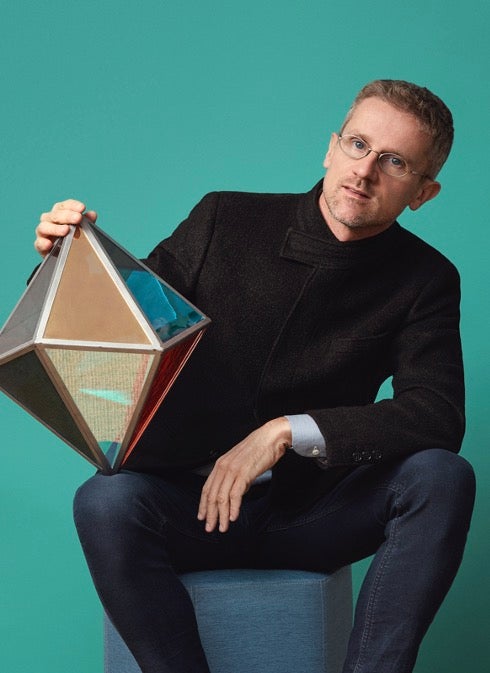
Dr. Carlo Ratti
Director, MIT Senseable City Lab
Founding Partner, Carlo Ratti Associate
An architect and engineer by training, Professor Carlo Ratti teaches at MIT, where he directs the Senseable City Laboratory, and is a founding partner of the international design and innovation office Carlo Ratti Associati. A leading voice in the debate on new technologies’ impact on urban life, his work has been exhibited in several venues worldwide, including the Venice Biennale, New York’s MoMA, London’s Science Museum, Barcelona’s Design Museum and Bi-City Biennale of Architecture and Urbanism. Three of his projects – the Digital Water Pavilion, the Copenhagen Wheel, and Scribit– were hailed by Time Magazine as ‘Best Inventions of the Year’. He has been included in Wired Magazine’s ‘Smart List: 50 people who will change the world’. He is currently serving as co-chair of the World Economic Forum’s Global Future Council on Cities and Urbanization. For further information visit www.carloratti.com and senseable.mit.edu
Understanding Past and Present Mars: The Search for Water
In collaboration with the Embassy of Italy and the Italian Cultural Institute of Washington DC. it is my distinct pleasure to share with you the extraordinary work of Dr. Roberto Orosei and the Marsis team working on finding evidence of the presence of water below the surface of Mars. Dr. Orosei is a distinguished astrophysicist who is the principal investigator of the latest developments of the Marsis research project currently searching for proof of detecting water below the surface of Mars. Enjoy the video. We would like to give credit for the images to Giuseppe Buccaria.
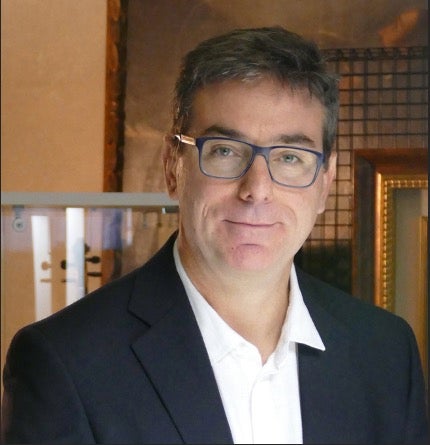
Dr. Roberto Orosei
Astrophysicist, Principal Investigator of the Marsis Project
“Dr. Roberto Orosei was born in Reggio Emilia, Italy. He studied at the University of Bologna and received a Ph.D. degree from the University of Rome “La Sapienza”. After spending two years as a Research Fellow at the European Space Research and Technology Centre in Noordwijk, the Netherlands, he moved to the Institute for Space Astrophysics in Rome, where he participated in the design and realization of instruments for solar system exploration missions.
He is a science team member of space experiments for the Rosetta, Mars Express, and Jupiter Icy Moons Explorer missions of the European Space Agency, and for NASA’s Cassini, Mars Reconnaissance Orbiter, Dawn and Juno probes. He is the principal investigator of the MARSIS radar on board ESA’s Mars Express spacecraft, which provided evidence of the presence of liquid water beneath the South polar cap of Mars.
He is a member of the Italian Astronomical Society and the International Astronomical Union. The main belt asteroid 1993 RJ3 has been named 19224 Orosei in 2007. He currently works at the Institute for Radioastronomy in Bologna and teaches a course in astrobiology at the University of Bologna.”
Biorobotics Made in Italy
Prof. Paolo Dario shares with the viewers his work with bio robotics that dates back to his youth from innovations related to artificial hearts, artificial hands, and artificial arms. His approach to bio-robotics reflects the intersection between science and engineering, robotic ethics, and robotics as intrinsically interdisciplinary. In collaboration with the Embassy of Italy and the Cultural Institute of the Embassy of Italy in Washington, DC we invite you to view the video.
Paolo Dario
Professor of Biomedical Robotics and Pro-Rector for the University’s Third Mission School of Advanced Studies, Sant’Anna, Pisa, Italy
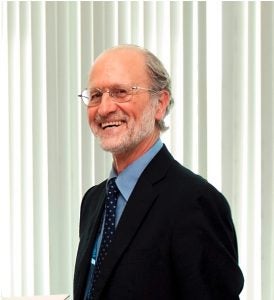
Paolo Dario is a Professor of Biomedical Robotics and Pro-Rector for the University’s Third Mission at the Sant’Anna School of Advanced Studies, Pisa, Italy. He has been the Founding Director of The BioRobotics Institute and Founding Coordinator of the Ph.D. Program in biorobotics at the Sant’Anna School of Advanced Studies. He has been and is visiting researcher, professor, and fellow at various universities and scientific institutions in Europe, the USA, the Middle East, and Asia. His current research interests are in the field of bio-robotics and bionics and include surgical robotics, micro/nano devices for endoscopy, bio-inspired devices and systems, and assistive and companion robots. Paolo Dario is the author of 440+ journal publications (Scopus), his H-Index is 73 (Scopus) and 98 (Google). He is a co-author of 50+ international patents and co-founder of 5 start-up companies. Paolo Dario has coordinated many large national and European projects, and he served in many EU Committees. He is the Founding Editorial Board Member of the Journal “Science Robotics”, Associate Editor of the IEEE Transactions on Biomedical Engineering, and Editor-in-Chief of the new IEEE Transactions on Medical Robotics and Bionics. Paolo Dario is an IEEE Life Fellow and a Fellow of the European Society on Medical and Biological Engineering. He served as President of the IEEE Robotics and Automation Society and received several prizes and Awards, including the 1996 Joseph Engelberger Award for Medical Robotics, the 2014 IEEE RAS George Saridis Leadership Award, and the 2017 IEEE RAS Pioneer Award for Biorobotics.
Distant Sounds: A concert by the artists of the music ensemble Modern Musick, in residence in the Georgetown University Music Program
The Italian Research Institute of the Georgetown University College of Arts & Sciences is pleased to share with our audience Distant Sounds, a concert by the music ensemble Modern Musick, organized by Prof. Del Donna and taught by Prof. McCann. During the challenging months the Covid-19 pandemic has affected the lives of our students, faculty, and staff, the Distant Sounds concert offers us the profound and soothing effect of music.
Distant Sounds
Modern Musick
Risa Browder – Baroque Violin
John Moran – Viola Da Gamba & Barque Cello
Dongsok Shin – Harpsichord
Johann Sebasitan Bach (1685 – 1750)
Sonata in G major for violin and basso continuo, BWV 1021
Adagio
Vivace
Largo
Preseto
Arcangelo Corelli (1653 – 1713)
Sonata in C major for violin and basso continuo, op. 5, no. 3
Adagio
Allegro
Adagio
Allegro
Allegro
Marin Marais (1656 – 1728)
Sonnerie de Sainte-Geneviève du Mont de Paris
for violin, viola da gamba, and basso continuo
Johann Sebastian Bach (1685 – 1750)
Sonata in G major, BMV 1027/1039
arranged for violin, viola da gamba, and basso continuo
Adagio
Allegro ma non tanto
Andante
Allegro moderato
The present concert was featured as part of the course “Live Music in the Context of a Pandemic” offered by the Georgetown University Music Program. It was created by Profs. Bryan McCann (Chair, History Department) and Anthony R. DelDonna (Director, music program taught in the spring semester of 2021. Each week, the course featured live discussions with professional musicians across the globe (via Zoom) to learn how they have responded to the Covid-19 pandemic, especially their loss of performance opportunities and related activities such as masterclasses and residencies. The discourse was especially attentive to the ways in which professional musicians responded to the multiple challenges presented by the pandemic in order to make their music heard. The discussions with artists were then followed by recorded performances contributed created expressly for the course.
The present video features the early music ensemble Modern Musick, which are in residence in the Georgetown University Music Program. Modern Musick specializes in music of the early modern period, specifically the Baroque (ca. 1570-1720) and Pre-Classic/Classic era (ca, 1720-1800). The musicians in the video include Risa Browder (baroque violin), John Moran (baroque cello, viola da gamba), and Dong Sok Shin (harpsichord). The program includes a diverse array of music, with a concentration on the Baroque sonatas of Johann Sebastian Bach (1685-1750), Arcangelo Corelli (1653-1713) and Marin Marais (1656-1728).
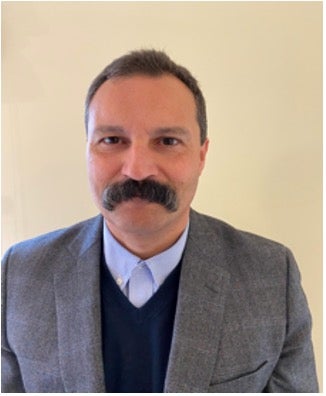
Anthony DelDonna
Professor & Director of the Music Program
Georgetown University College of Arts & Sciences
Anthony R. DelDonna teaches courses on European art and music with a focus on early modern Italy. His research focuses on the dramatic stage (opera, oratorio, cantata), archival studies, instrumental music, and ballet. DelDonna is the author of the monographs Instrumental Music in Late Eighteenth-Century Naples: Politics, Patronage and Artistic Culture (Cambridge University Press, 2020) and Opera, Theatrical Culture and Society in Late Eighteenth-Century Naples (Ashgate Press, 2012); co-editor of The Cambridge Companion to Eighteenth-Century Opera (Cambridge University Press, 2009); co-editor of Music as Cultural Mission: Explorations of Jesuit Practices in Italy and North America (St. Joseph University Press, 2014;) and editor for Genre and Music in the 18th century (Steglein Press, 2008). He is currently finishing the critical edition of La ballerina amante (opera and libretto,) by Domenico Cimarosa and Giovanni Bryan McCann.
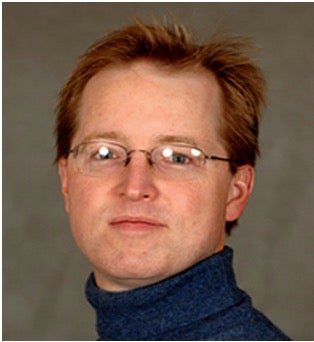
Bryan McCann
Associate Professor
Chair, Department of History
Georgetown University College of Arts & Sciences
Bryan McCann teaches courses on Colonial and Modern Latin America, particularly Brazil, as well as courses on Comparative and Global History. He has published works on a wide range of topics in Modern Brazilian and Urban History. His books investigate the history of favelas and their relationship to the broader city in Rio de Janeiro, the history of Brazilian radio and popular music, the transformation of Brazil since the 1980s, and the nature of the informal city in Latin America. His current research explores Bus Rapid Transit and Rights to the City in the Global South, analyzing how and why a model of urban transit planning developed in Curitiba, Brazil in the 1970s has been adopted and adapted around the world.
Stefano Boeri Architetti Studio
Leaders in Architecture and Urbanism
The Forest City Projects
The Italian Research Institute of the Georgetown University College of Arts & Sciences, in collaboration with the Embassy of Italy and the Italian Cultural Institute of Washington, DC is pleased to share the significant work of Stefano Boeri Architetti. Based in Milan, with offices in Shanghai and Tirana, Albania, Stefano Boeri Architetti since 1993 has been dedicated to the research and practice mainly in architecture and urbanism. It has developed architectural designs and regeneration projects in complex environments and in several continents involving professionals, ranging from engineering consultants and landscape architects to agronomists and even social scientists.
Since 2014 Stefano Boeri Architetti has been working in China, with an office in Shanghai. Amidst the wide series of works currently underway is the Nanjing Vertical Forest, the first Vertical Forest in China: two towers that include in the architecture of the facades 800 trees from 27 local species and 2,500 cascading plants and shrubs. The project Forest City was presented for the first time at the Paris Climate Conference (COP21) as a model of a sustainable city, capable of consuming tons of CO2 and generating oxygen in one of the most polluted areas in the world, i.e. the Beijing-Tianjin-Hebei region.
Since 2015, Stefano Boeri Architetti has been also operating through an office in Tirana, Albania, currently engaged in developing the General Local Plan and the strategic vision of the city. Dubbed “Tirana 2030”, the intervention aims the redefinition of the Albanian capital as a new metropolitan city.
Besides the General Local Plan of Tirana, Stefano Boeri Architetti is also working on numerous development projects such as the new General Plan for the Republic of San Marino. Moreover, the Studio has recently been appointed to the masterplan of the Doha Qatar New Port Project and to the development of the “Triangle of Maspero”, a complex of towers and public facilities along the Nile waterfront, in the heart of downtown Cairo. Among the most well-known and relevant built projects, besides Vertical Forest in Milan, are the Villa Méditerranée in Marseille and the House of the Sea at La Maddalena, in Sardinia.
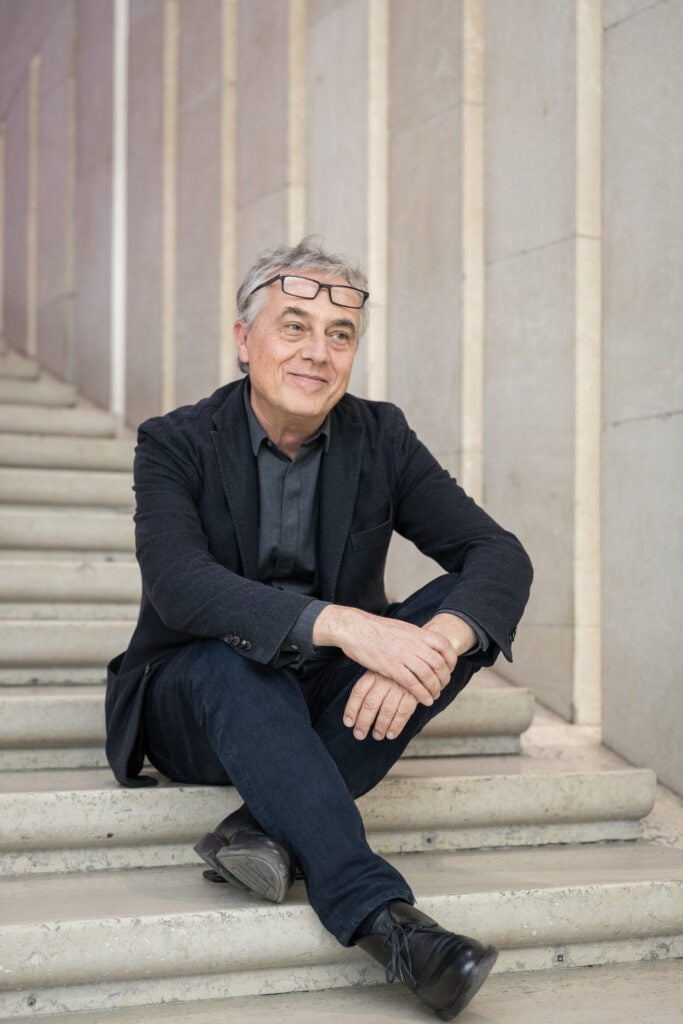
Stefano Boeri
Stefano Boeri was born in 1956 in Milan. In 1980 he graduated in Architecture at Milan Politecnico and in 1989 he received his Ph.D. from the Istituto Universitario di Architettura di Venezia (IUAV). A full Professor of Urban Planning at Milan Politecnico, Boeri has been a guest professor at various universities, including Harvard University’s Graduate School of Design (GSD), In 1993 he founded Multiplicity, a research agency that involves artists, photographers, and analysts and investigates the relationships between geopolitics and urban planning.
Editor of the international magazines Domus (2004-2007) and Abitare (2007-2011), Boeri has published articles in various newspapers and journals including Casabella, Icon, 2G, Archis and Blueprint as well as numerous books, including Il Territorio che Cambia(with A. Lanzani and E. MariniBiomilano, Fare di più con meno (Il Saggiatore, 2012), A Vertical Forest, and instructions booklet for the prototype of a forest city (Corraini, 2015), just to name a few. From 2015 to 2018 he was a member of the scientific committee of the Uffizi Galleries in Florence. During the post-earthquake reconstruction works in central Italy, Stefano Boeri was appointed Urban Planning Expert Consultant for post-earthquake reconstruction.
In November 2018, he was Co-Chair of the Scientific Committee for the first World Forum on Urban Forests. In 2019 he presented in New York the Great Green Wall of Cities project. Since 2020, Stefano Boeri is President of the Scientific Committee of Forestami, the project aimed at planting 3 million trees in the metropolitan area of Milan by 2030. In 2012 he curated São Paulo Calling, an international research project in six major contemporary cities, which resulted in an exhibition in São Paulo, Rome, Mumbai, Nairobi, Moscow, Baghdad, and Medellin. In 2017 he was curator of SUSAS (Shanghai Urban Space Art Season), the most important urban planning, architecture
and public art event promoted by the Municipality of Shanghai.
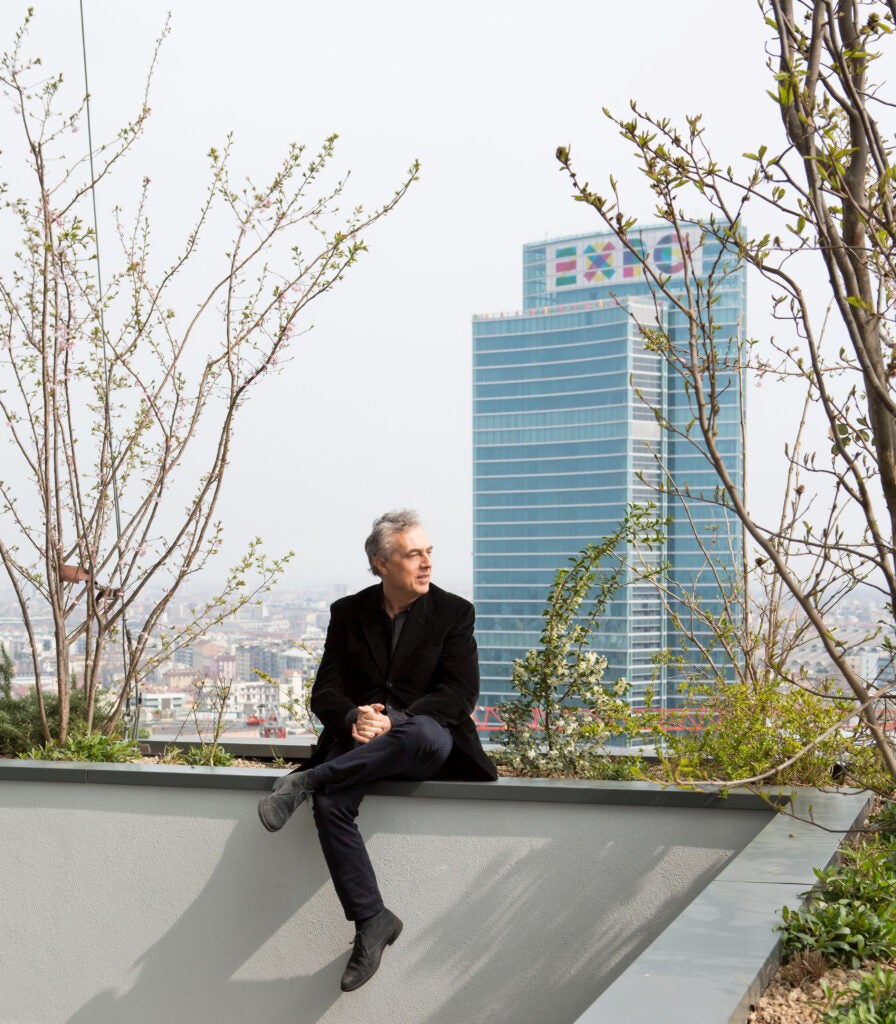
As an architect and urban planner, Stefano Boeri founded Boeri Studio in 1999, together with Gianandrea Barreca and Giovanni La Varra while 2011 saw the establishment of Stefano Boeri Architetti. In 2014, with Yibo Xu, he founded Stefano Boeri Architetti in China, based in Shanghai. Attention to the relationship between city and nature led to the creation of the Milan Vertical Forest, the first prototype of a residential building featuring over 700 trees and 20,000 plants and a model of urban forestation that considers vegetation as an essential element of architecture. He has become one of the main players in the debate on climate change in the field of international architecture.
Stefano Boeri Architetti is currently working on international urban forestation projects such as Vertical Forests in Lausanne, Utrecht, Eindhoven, and Nanjing and several Forest Cities projects around the world.
Leonardo da Vinci: Art and Science
by Professor Pietro C. Marani
In collaboration with the Georgetown University Department of Art and Art History, the Department of Italian, the Embassy of Italy, and the Italian Cultural Institute, we invite you to view an interview and commentary by Prof. Pietro Marani, the leading Leonardo scholar. The interview is in the context of Amazing Leonardo, a film by Sky Arte, the Italian television channel dedicated to the arts. The film was produced on the occasion of the celebrations commemorating 500 years after the death of Leonardo da Vinci (May 2, 1519) with Prof. Pietro Marani as the scientific consultant. Prof. Marani states that Leonardo is “a great artist-scientist because he has made art a science”. He discusses the intersection between art and science that defines Leonardo da Vinci’s lifelong work and unveils the mysteries behind the greatest genius the world has ever known.
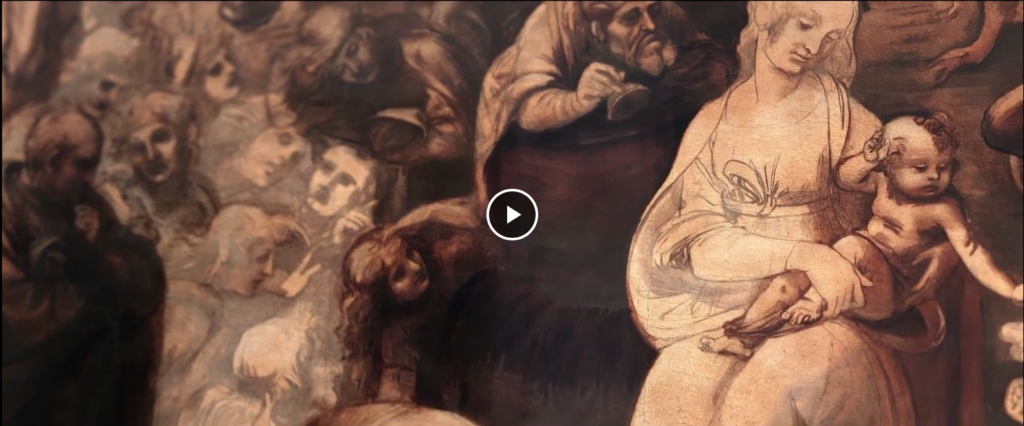
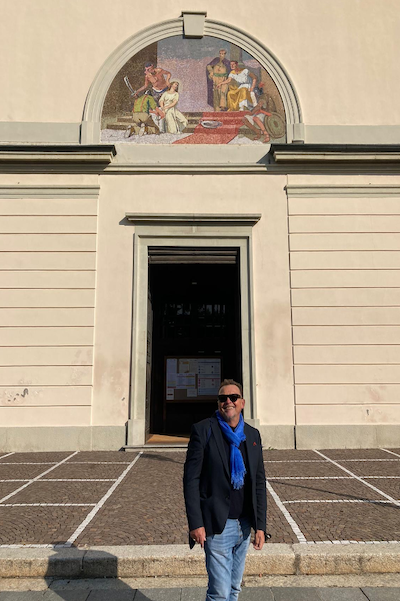
Professor Pietro C. Marani
Professor of Modern Art and Museology Politecnico of Milan
Former Vice-Director of the Pinacoteca di Brera in Milan, Italy
Full Professor in Modern Art History, he teaches Modern Art History and Museology at the Politecnico of Milan. Member of the Design Ph.D. Team Professor. He has been Director of the Soprintendenza for Cultural Heritage and Vice-Director of the Pinacoteca di Brera in Milan, and co-Director of the restoration campaign of Leonardo da Vinci’s Last Supper. He is President of the Ente Raccolta Vinciana, founded 1904, in the Castello Sforzesco, Milan, and a member of the Commissione Nazionale Vinciana, founded 1903, in Rome.
He has written more than two-hundred essays and books on Leonardo da Vinci, Francesco di Giorgio Martini, the Lombard artists of the Renaissance, and on the painting and the architecture of the Italian Renaissance, and, finally, on problems of museology and restoration. He wrote also on contemporary artists: Peter Greenaway, Igor Mitoraj, Gary Stephens, Alessandro Papetti, Agostino Arrivabene, etc.
He collaborated to the catalogue of the works of art preserved in Milanese Museums: Pinacoteca di Brera, Pinacoteca del Castello Sforzesco, Pinacoteca Ambrosiana, Quadreria dell’Arcivescovado. He was the curator of the catalog of paintings kept in the Bagatti Valsecchi Museum and of the works of art in the Certosa Museum, Pavia ( with B.Fabjan ). He has published the Catalogue of the Drawings of Leonardo da Vinci and His Circle kept in French Public Museums ( 2008 ). He has collaborated with the two important exhibitions devoted to Leonardo’s Drawings and manuscripts held in the Metropolitan Museum in New York ( 2003 ) and in the Musée du Louvre, Paris ( 2003 ).
He has organized and curated various exhibitions in many important cities, i.e. Leonardo da Vinci 1452-1519. The Design of the World ( Milan, Palazzo Reale, 2015 ) on the occasion of the Universal Exhibition, and in other cities of the world ( Montreal; Venice; Milan; Florence; Rome; Tokyo, Turin ). He is a member of the National Committee to celebrate the 5th anniversary of Leonardo’s death in 2019. Some of his books are translated into eight languages.
Science and Technology: Latest Research on Optics and Photonics
The Georgetown University Italian Research Institute of the Georgetown University College of Arts & Sciences, in collaboration with the Embassy of Italy and the Italian Cultural Institute, is pleased to share online the latest research on optics and photonics ranging from new laser technology to breakthrough flat lenses by the eminent scientist Federico Capasso, the inventor of the quantum cascade laser, using nanotechnology.
Photonics Innovation and the Future of Laser Technology
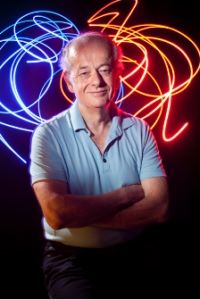
Professor Frederico Capasso
John A. Paulson School of Engineering and Applied Sciences
Harvard University
Federico Capasso is the Robert Wallace Professor of Applied Physics at Harvard University, which he joined in 2003 after 27 years at Bell Labs where his career advanced from postdoctoral fellow to Vice President for Physical Research. He has important contributions to optics and photonics, nanoscience, materials science, and quantum electrodynamics, including the bandgap engineering technique leading to his invention of the quantum cascade laser, research on metasurfaces including the generalized laws of refraction and reflection, high-performance metalenses, and “flat optics” in general, and fundamental studies of the Casimir force, including the first measurement of the repulsive Casimir force.
He co-founded EOS Photonics to market Quantum Cascade Laser-based sensors of gases. It merged in 2015 with Pendar Medical to form Pendar Technologies (http://www.pendartechnologies.com/) a privately held company with a mission to create intelligent chemistry systems. Capasso is a scientific advisor and board member. He is a board member of Metalenz (https://www.metalenz.com/) , which he co-founded in 2016 and is focused on bringing to market metalenses and cameras for high volume markets.
His awards include the Balzan Prize, the IEEE Edison Medal, the IEED David Sarnoff Award, the American Physical Society Arthur Schawlow Prize in Laser Science, the King Faisal Prize, the AAAS Rumford Prize, the European Physical Society Quantum Electronics Prize, the Wetherill Medal of the Franklin Institute, the Materials Research Society Medal, the Jan Czochralski Award for lifetime achievements in Materials Science, the Rob Wood Prize of the Optical Society of America, the Matteucci Medal of The Accademia dei Quaranta and the Gold Medal of the President of Italy for Meritorious Achievement in cultures and in the arts. He is a member of the National Academy of Sciences, the National Academy of Engineering, a fellow of the American Academy of Arts and Sciences (AAAS), and of the Accademia dei Lincei. He holds honorary doctorates from Lund University, Diderot University, the University of Bologna, and the University of Roma, Tor Vergata.
Abnormal Microglia Activity Associated with Neurological and Psychiatric Disorders
This publication by Dr. Mario Capecchi, Nobel Laureate, & colleagues is a study of genetically defined microglia (the immune cells of the brain) sublineage in mice which has the ability to suppress neurological disorders such as obsessive compulsion and anxiety symptoms associated with abnormal microglia.
Abstract
Aberrant microglia activity is associated with many neurological and psychiatric disorders, yet our knowledge about the pathological mechanisms is incomplete. Here, we describe a genetically defined microglia sublineage in mice that has the ability to suppress obsessive compulsion and anxiety symptoms. These microglia derive from precursors expressing the transcription factor Hoxb8. Selective ablation of Hoxb8-lineage microglia or the Hoxb8 gene revealed that dysfunction in this cell type causes severe over-grooming and anxiety-like behavior and stress responses. Moreover, we show that the severity of the pathology is set by female sex hormones. Together, our findings reveal that different microglia lineages have distinct functions. In addition, our data suggest a mechanistic link between biological sex and genetics, two major risk factors for developing anxiety and related disorders in humans.
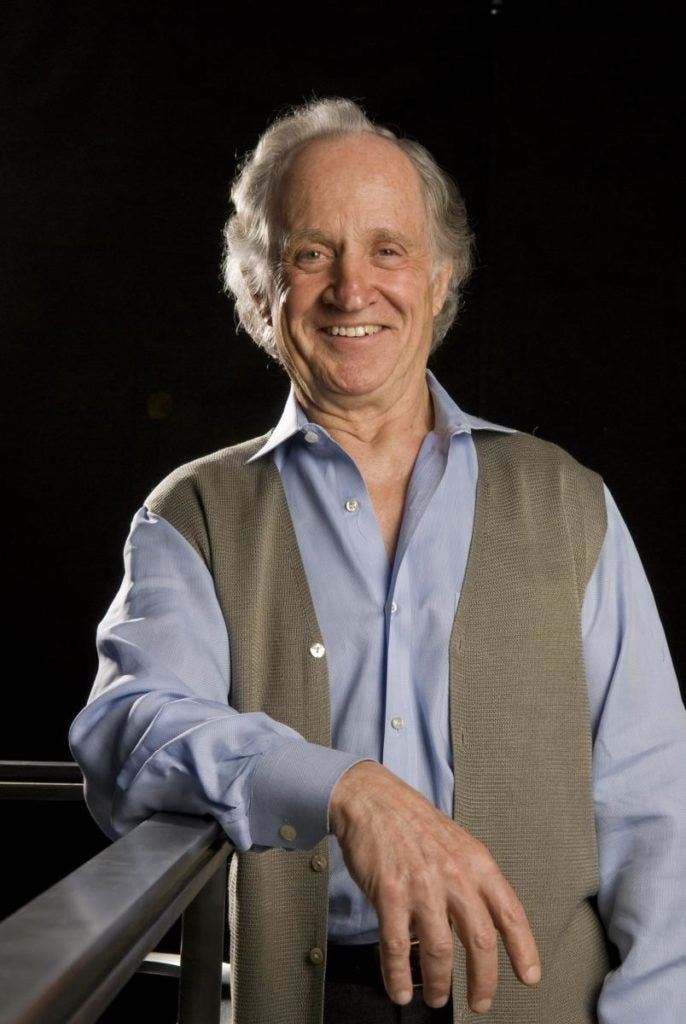
Dr. Mario R. Capecchi
2007 Nobel Laureate in Medicine
Distinguished Professor in
Human Genetics & Biology
University of Utah School of Medicine
Mario R. Capecchi, Ph.D., was born in Verona, Italy, in 1937. He received his Bachelor of Science degree in chemistry and physics from Antioch College in 1961 and his Ph.D. in biophysics from Harvard University in 1967. After six years on the Harvard School of Medicine faculty, he joined the University of Utah as a professor of biology in 1973.
Dr. Capecchi is best known for his pioneering work on the development of gene targeting in mouse embryo-derived stem cells. This technology allows scientists to create mutations in any desired gene, giving them virtually complete freedom to manipulate the DNA sequence in the genome of living mice.
His work in this area revolutionized the study of mammalian biology and is used by scientists worldwide to understand countless diseases. In 2007, he was recognized for this achievement with the Nobel Prize in Physiology or Medicine, which he shared with Oliver Smithies and Martin Evans.
His current research interests include the molecular genetic analysis of early mouse development, neural development in mammals, production of mouse models of human genetic diseases, gene therapy, homologous recombination, and programmed genomic rearrangements in the mouse.
Distinguished Professor of human genetics and biology, Dr. Capecchi belongs to the National Academy of Sciences and the European Academy of Sciences, and most recently, the National Academy of Medicine. The Nobel Prize tops a long list of worldwide awards and recognition he has received for his scientific achievements.
Latest Research to Target and Test the DDX3X Enzyme in the SARS-CoV-2 Virus that Causes COVID-19
Dr. Giovanni Maga, Director of the Institute of Molecular Genetics IGM-CNR in Pavia, Italy, and Head of the DNA Enzymology & Molecular Virology Unit, and his team have focused their research on the use of the enzyme DDX3X RNA to fight emerging viruses such as SARS-CoV-2 that causes COVID-19. In collaboration with the Embassy of Italy and the Italian Cultural Institute of Washington DC, we invite you to watch Dr. Maga’s presentation of his lab’s current critical scientific research which is the only answer to combat the virus that has completely disrupted our lives.

Dr. Giovanni Maga
Director
Institute of Molecular Genetics IGM-CNR in Pavia
Head of the DNA Enzymology & Molecular Virology Unit
Scientific Interests
Dr. Giovanni Maga has been working since his graduation on the enzymology of genome duplication and repair. His research has focused on the characterization of different enzymatic systems responsible for nucleotide metabolism and the duplication of genetic information in human cells and viruses. He is also interested in the biochemical pathways involved in coupling the DNA replication and repair machinery to cell cycle regulation in normal vs. tumoral human cells. His interest is devoted both to the elucidation of basic molecular processes and to the exploitation of novel enzymatic targets for antiviral and anticancer chemotherapy.
Presently he is the Director of the Institute of Molecular Genetics IGM-CNR, in Pavia and Head of the DNA Enzymology and Molecular Virology Unit. His main lines of research concern the enzymology of genome replication and repair in eukaryotic cells and viruses, and the identification of novel targets and drugs for antiviral and anticancer chemotherapy
Publications
Dr. Maga is the author/co-author of 250 publications in international peer-reviewed journals, which obtained 11549 citations. His h-index is 56 (Google Scholar). He wrote four books for popularizing science and is active in scientific dissemination to the general public in newspapers, television, and in public events. He is a collector of antique microscopes.
A Walk in the Exhibition
This year we celebrate the 500th anniversary of the death of Raffaello Sanzio, born on April 6, 1483, in Urbino and died on April 6, 1520, in Rome at the age of 37. A great High Renaissance painter and architect, Leonardo, and Michelangelo were known as the Trinity of High Renaissance Art.
We are thrilled to share virtually with our audience A Walk in the Exhibition, the video of an extraordinary exhibition at the Scuderie del Quirinale in Rome which the Director of the Scuderie del Quirinale, Matteo Lafranconi, has graciously given us permission to show. The exhibition, curated by Director Matteo Lafranconi and Prof. Marzia Faietti, in collaboration with the Uffizi Gallery in Florence gives tribute to Raffaello’s great work and includes around 120 of his works.

Marzia Faietti
Professor of Print & Drawing
University of Bologna
Former Director of the Department of Prints & Drawings At the Uffizi Gallery in Florence
Marzia Faietti, former Director of the “Gabinetto dei Disegni e delle Stampe” at the Uffizi in Florence, currently teaches History of Print and Drawing at the “Scuola di Specializzazione in Storia dell’Arte” of the University of Bologna and at the “Scuola di Specializzazione in Beni storico-artistici” of the “Università Cattolica del Sacro Cuore” of Milan. She is associated with the Kunsthistorisches Institut in Florenz – Max-Planck-Institut.
Member of the Editorial Board of the journals “Print Quarterly”, “Nouvelles de l’estampe” and “Rivista d’Arte”, Marzia Faietti holds since 2013 the position of President of the CIHA Italian Committee, as well as Vice-President of the CIHA International Bureau. In September 2017 she was appointed President of the Scientific Committee at the Fondazione Magnani, Reggio Emilia.
Marzia Faietti has lectured and taught widely in Italian and at foreign Universities. She has organized numerous international exhibitions and conferences including the XXXV CIHA World Congress in Florence and she has published papers on international scientific journals. She has been responsible for many exhibitions focusing on the graphic arts collections both in the Pinacoteca Nazionale of Bologna and in the Uffizi, where she has promoted new editorial series, such as the Inventario Generale delle Stampe (General Catalogue of Prints), and she has promoted the “Progetto Euploos” (digital cataloging of the Uffizi drawings).
Her research interests focus mainly on the Ferrarese painting of the post-Trident period; on the Bolognese and Emilian paintings, prints, and drawings of the fifteenth and sixteenth centuries and their developments in the following centuries; on the graphic language of Andrea Mantegna; on the antique culture of Parmigianino; on the Italian erotic engraving of the sixteenth century and its relations with antiquity; on Raffaello’s drawings and on the relationships of Raffaello’s art with poetry and literature. Furthermore, as part of her theoretical study interests, Marzia Faietti conceived the LINEA Project in collaboration with the Kunsthistorisches Institut in Florenz – Max-Planck-Institut.
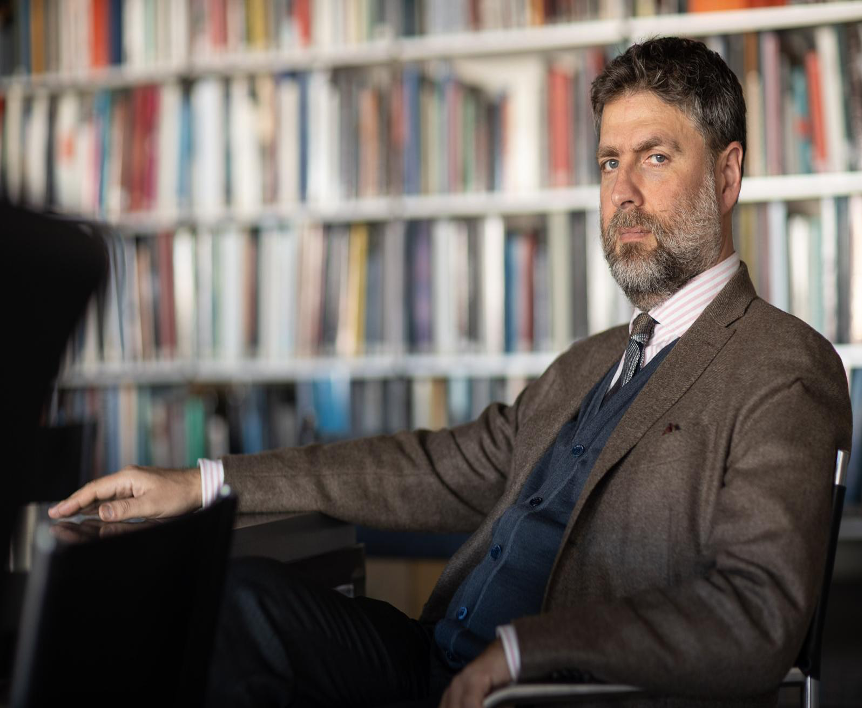
Matteo Lafranconi
Ph.D/MiBACT, Director, Scuderie del Quirinale, Roma
Matteo Lafranconi is the Director of the Scuderie del Quirinale, a major exhibition venue in Rome belonging to the Presidency of the Italian Republic and run by the Italian Ministry of Culture through the in-house company ALES SpA.
After musical studies (Piano Diploma, Conservatorio Cherubini, Florence), Matteo Lafranconi specialized in Art History in Rome (La Sapienza University), Naples (Federico II University; master and Ph.D.) and Paris (Université de Paris IV Sorbonne), with a post-doctoral specialization in the United States (Washington, The National Gallery of Art; Center for Advanced Studies in Visual Arts) and in Spain (Madrid, Museo del Prado). He realized studies and research in Italian, French, Spanish, and Russian history of art, between the XV and XX centuries, with a preference for museology, history of the collection, Old Masters’ Drawings, and academic practices.
He edited the Catalogue of the Collections of the XIX century at the National Gallery of Modern Art in Rome (Electa 2006) and signed with Sandra Pinto the volume “Gli storici dell’arte e la Peste (The Art Historians and the Plague) (Electa, 2006). His contributions appeared in the most prominent magazines of art history including “The Burlington Magazine”, “Paragone”, “Prospettiva”, “Perspective”. His essays appeared in many exhibition catalogs, conference proceedings, and miscellaneous volumes of his fields of interest. From 2006 to 2012 he was a member of the Scientific Committee of the magazine “Perspective” (Institut National d’Histoire de l’Art, Paris) for XIX and XX centuries.
He gave lectures and conferences at the main museums and universities in Italy and abroad (National Gallery, London; National Gallery of Art, Washington; Museo del Prado, Madrid; Musée du Louvre, Paris; Hermitage, St. Petersburg). He taught Old Masters’ Drawing and Museology at the Sapienza University in Roma and at the Calabria University.
Matteo Lafranconi was Head of Cultural Programs at the Palazzo delle Esposizioni, in Rome, from 2007 to 2016.
He is a member of the CIHA (Comité International d’Histoire de l’Art) Italy from 2014.
The Latest Scientific Research on the Use of Plasma for COVID-19 Patients
Churchill’s Curtain
A Reflection on the COVID-19 Crisis
Claudio Magris, 2020
Translated by Dr Sara Hager
On King Charles Street in London, there is the Churchill Museum and Cabinet War Rooms where the British Government used to meet during World War II. A few meters below there were rooms, underground ladders, and earth bags that were supposed to protect ministers, generals, functionaries, employees, workers, and service personnel from the German bombs.
Have mercy on us! Today we have heart-wrenching defenses against the attack of one of the most horrible armies in History. In the homes of the United Kingdom pain and mourning entered, just as Churchill had announced, but not the Hitler Wehrmacht. There are a few bedrooms. On the wall of some rooms, there is a large geographic map where everyday battle places, advances, retreats, victories, and defeats were marked. In one of these rooms, there is a curtain that one could close in order to cover that large geographic map on the wall.
It is a room-I don’t believe the only one where at times Churchill slept, as the whisky bottle placed on the nightstand near the bed attests. Many years ago while visiting the Museum, I asked why the curtain, given that there were no windows from which light could come in. They told me that Churchill had wanted it. Perhaps, after having indefatigably confronted always new and unpredictable situations on a daily basis, and having resolved not to give up, for a few hours, if it were possible, he did not want to know anything else. He would draw the curtain, which made the war scene disappear from his view, and sending everything to hell would go to sleep, likely after a shot of good whiskey.
Wars can only be won this way, fighting strenuously, but without allowing others to be completely absorbed by this fight. You can be invaded by war not only in your own country, but also in the head and in the heart, but without allowing the enemy to occupy all the thoughts and feelings, defending a small, but free space for the desires, the projects, even if they are futile, the hopes even if they are childish, and the most personal tastes. The enemy also attacks with anxiety and obsession. General mobilization is necessary, but so are the hours of sleep, possibly dreaming of something more pleasant than battles.
Perhaps, thanks to that curtain England was not bent. During World War II I was a child. I remember the bombardments and that my parents would carry me as rapidly as possible to the nearest air raid shelter, pathetically inadequate, but not useless. I remember the fear for my father, who was away for a certain period of time, and his heartfelt embarrassment because one of the four eggs that he had been able to buy had broken in his pocket. I remember our displaced relatives from bombed Naples, the Nazis, and the Yugoslavian occupation. But I also remember that during the war people were playing cards, they were entertaining themselves, and they continued to sin, thus enabling themselves not only to survive but to live.
In the war against the virus, it is imperative to fight to observe the prescribed rules because an army in a free exit is destined to lose. It is necessary to be informed, however, it is perhaps harmful or even less useful and draining to remain all day in front of the TV because the pile and the repetition of the news neutralize and diminishes its meaning. We can resist and we can win if realize the danger, also the danger of death, but without thinking only of death and its verbose emphasis. We can resist and we can win if we defend our desires, our pleasures, and our games. What would you do once asked a pious and dreary uncle to young St Luis of Gonzaga, who was playing in the garden, if you were to know that you were going to die in ten minutes? The child answered I would continue to play.
Claudio Magris
Italian writer, author the Danube
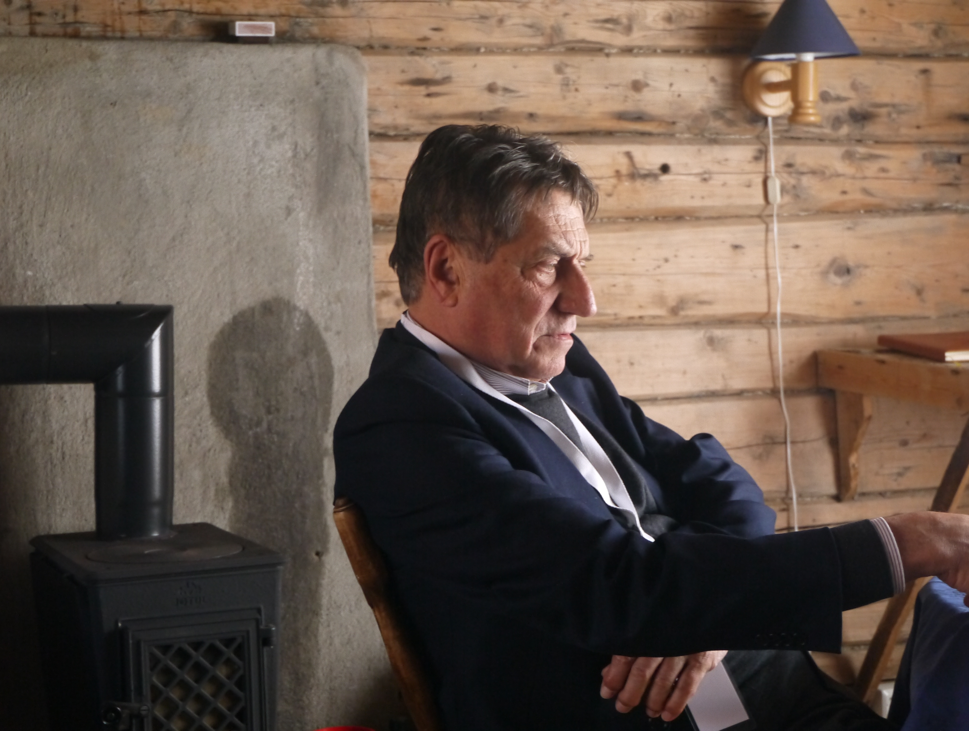
Claudio Magris, was born in Trieste in 1939. He graduated from the University of Turin, where he majored in German studies. For several years he taught modern German Literature at both the University of Torino and of Trieste. His master thesis, Il mito absuburgico nella letteratura austriaca moderna (Einaudi 1963) is still considered a milestone in the field of Austrian literature studies.
In 1986 he published his first novel, Danube, which was translated in 24 languages. He is the author of numerous novels and essays, translated into many languages as well as a columnist for the Corriere della Sera and other European newspapers.
His numerous publications include: Lontano da dove, Joseph Roth e la tradizione ebraico-orientale, L’anello di Clarisse, Illazioni su una sciabola, Inferences from a Sabre, A different sea, Blindly, Three Plays, La storia non è finita. Etica, politica, laicità, Blameless, Istantanee, and others.
He has received several honorary degrees and numerous awards, among them: Premio Strega, Leipziger Buchpreis zur Europäischen Verständigung, Praemium Erasmianum, Premio Principe de Asturias, Premio Campiello, Premio FIL de Literatura Guadalajara, Premio Qualità della Lettura (Corriere della Sera), Taormina International Award for Literary Excellence, and Kafka Prize, to name a few.
The Climate of the Past
A Lecture by Professor Carlo Barbante
Professor Carlo Barbante, Department of Environmental Sciences from Ca’Foscari University and Institute of Polar Sciences, CNR, our invited guest for our April 14 event on “From the Past to the Future: An Exploration of the Scientific Causes & Effects of Climate Change” has sent us the following link to his lecture on Climate of the Past.
Ice Memory Project

